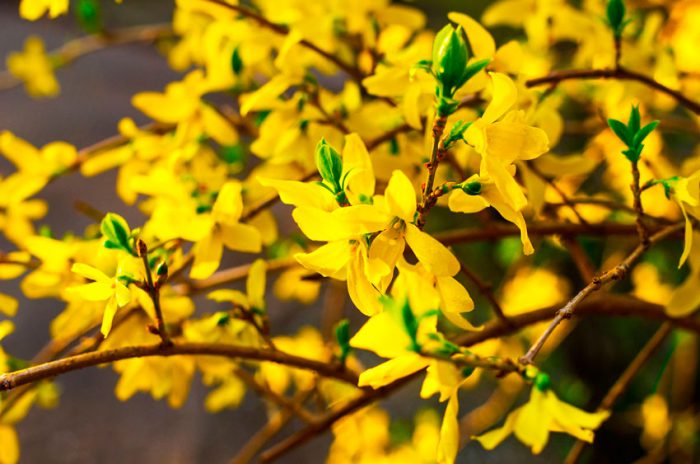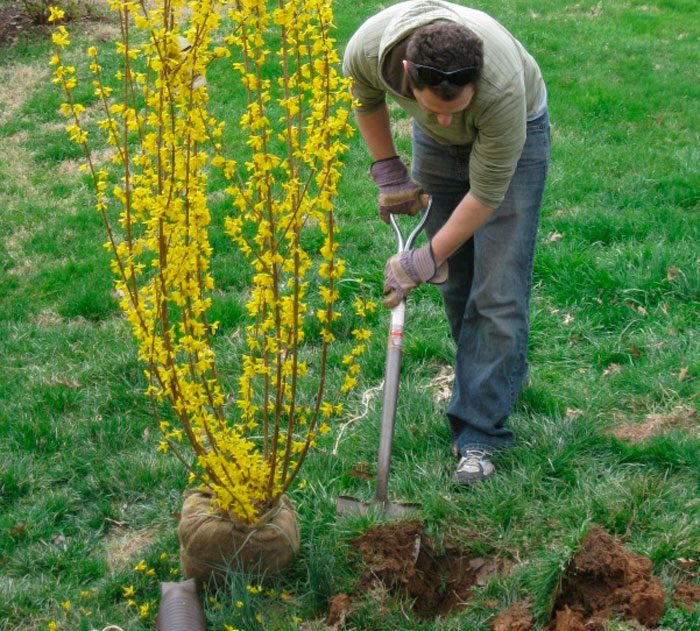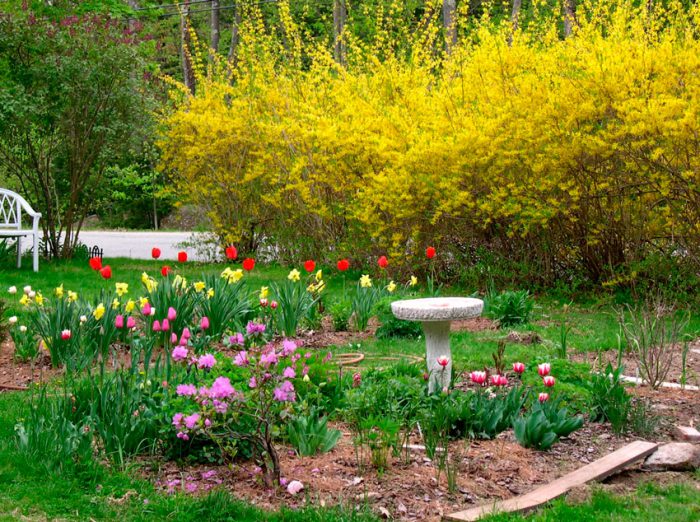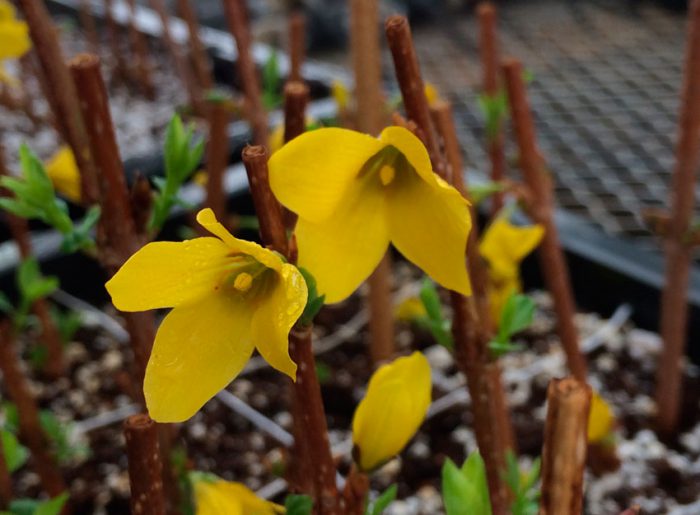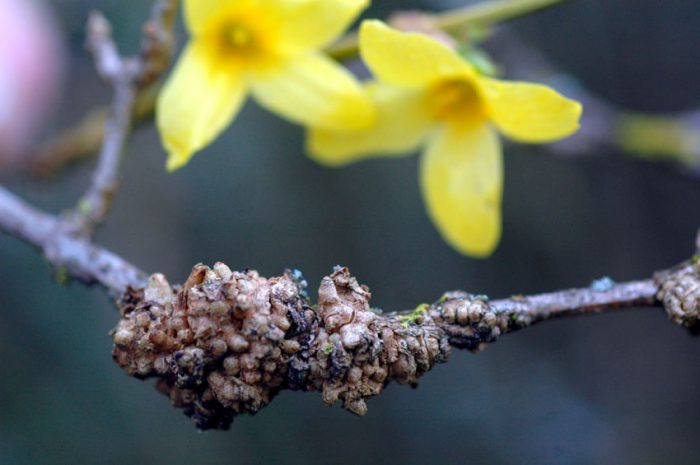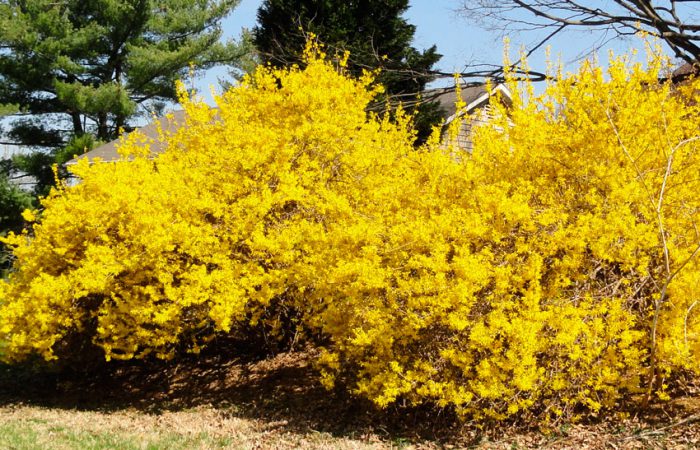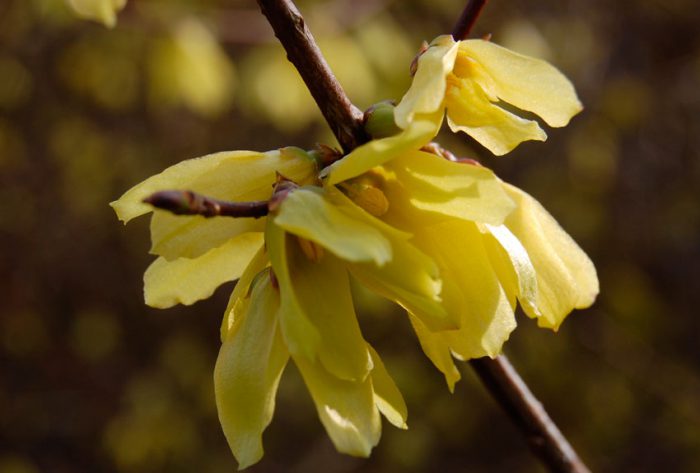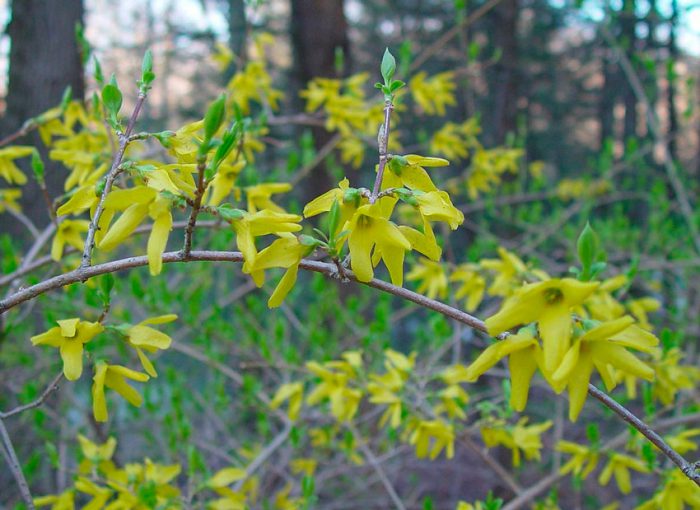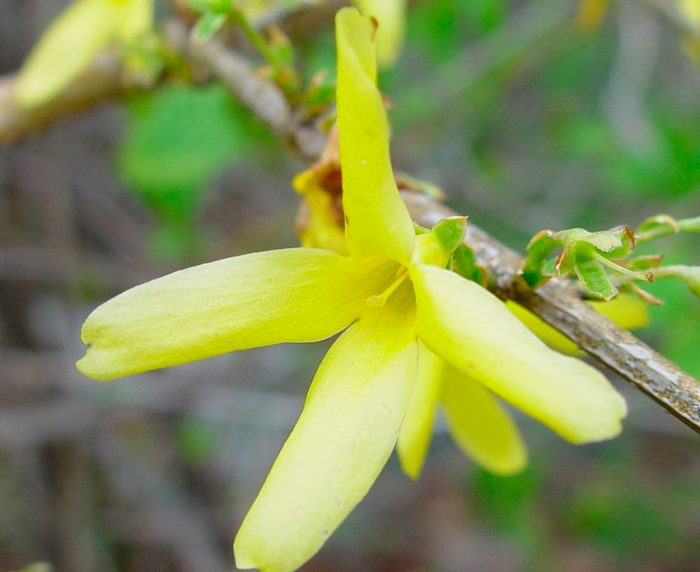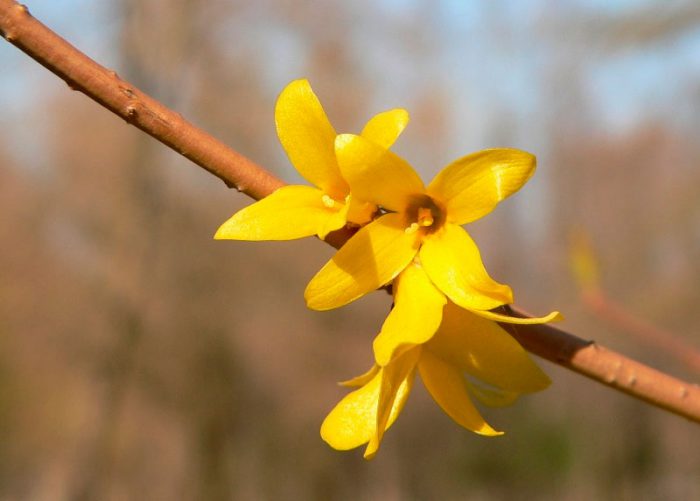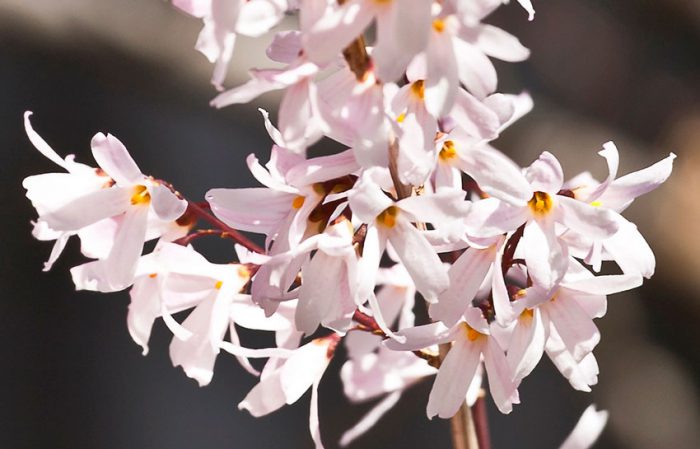The genus of not very large trees and shrubs forsythia (Forsythia), or forsythia, is a representative of the olive family. They bloom in early spring with rich yellow flowers. This genus is considered very ancient, which explains its widespread occurrence. So, in East Asia, you can see 6 different species of this plant at once (in Korea, Japan and China). And in European countries you can find only one species - European forsythia (Forsythia europaea), most of the plants are found in the Balkans. This plant was named after the Scotsman W. Forsyth, who was a botanist, chief gardener of Kensington Palace, and also one of the founders of the Royal Horticultural Society. For the first time, this plant got from China to European countries thanks to Forsyth.
Content
- 1 Features of forsythia
- 2 Features of growing forsythia
- 3 Planting forsythia in open ground
- 4 Care features
- 5 Forsythia after flowering
- 6 Types and varieties of forsythia with photos and names
- 6.1 Forsythia European (Forsythia europaea)
- 6.2 Forsythia giraldiana (Forsythia giraldiana)
- 6.3 Forsythia hanging, or drooping, or drooping (Forsythia suspensa)
- 6.4 Forsythia dark green (Forsythia viridissima)
- 6.5 Forsythia intermediate (Forsythia x intermedia)
- 6.6 Forsythia snowy, or white (Forsythia abeliophyllum)
- 6.7 Forsythia ovoid (Forsythia ovata)
Features of forsythia
Forsythia is not a very large tree or shrub, the height of which can vary from 1 to 3 m. The brownish-gray bark has a rough texture. In certain species, the leaf plates are trifoliate. However, most often they are oval, simple, oppositely located, do not have stipules, with a serrated edge, and can reach 2-15 centimeters in length. The rich yellow flowers are bell-shaped. Forsythia blooms at the beginning of the spring period, while the flowering duration is 20 days (in some cases longer). The fruit is a capsule with winged seeds.
Features of growing forsythia
Today in European countries most squares, private gardens and city streets are decorated with forsythia. It is considered a symbol of the arrival of spring. Imagine early spring, when everything is still gray and nondescript on the streets, and suddenly your gaze catches the forsythia blazing with its bright flowers. A distinctive feature of this shrub is its very early flowering. Also, this plant has won great love among gardeners due to the fact that it does not impose special requirements on growing conditions and care. The main features of growing:
- such a plant grows best in a well-lit area, but it can also be grown in shade;
- suitable soil must be limed;
- it is recommended to plant next to dark green conifers.
In autumn, the green foliage changes its color to violet-purple or golden, which makes the plant highly decorative again.
Planting forsythia in open ground
What time to plant
Forsythia can be planted or transplanted in spring or early autumn, before frosts begin, because the plant must take root well before frosts begin. This plant grows well in the shade, but it prefers a sunny area, which must be protected from gusts of wind. The quality of the soil is not important for this plant, but it feels best in dry, slightly alkaline soil. In the event that the land on the site is acidic, then it is recommended to add wood ash for digging into it.
Landing features
The planting hole should have a size of 50x50x60 centimeters, while the root system of the planted plant should be at a depth of 0.3 to 0.4 m.When planting several specimens at once, a distance of at least 150 centimeters should be maintained between them. At the bottom of the prepared planting pit, a drainage layer of crushed stone and broken brick should be laid, the thickness of which should be from 15 to 20 centimeters. From above it is covered with a layer of sand, the thickness of which should be 10 centimeters. After that, a soil mixture is poured into the pit, consisting of sand, leafy earth and peat, taken in a 1: 2: 1 ratio, to which 0.2 kg of wood ash must be added. Then the seedling must be placed in a prepared hole, which is filled with soil and compacted well. The planted forsythia must be watered abundantly. When planting in spring, the seedling will need to be looked after as an adult plant. If the planting was carried out in the fall, then no matter what type of plant was planted, it will be necessary to cover the trunk circle with a layer of mulch. For the winter, the plant must be covered. In this case, the covering material should only be used that allows air to pass through, so that the flower buds do not begin to rot during small thaws in winter.
Care features
It is necessary to care for forsythia in the same way as for other shrubs grown in the garden. If it rains regularly in summer, then you will not have to water this plant. This should be done only with prolonged drought, 1 or 2 times every 4 weeks, while 10 to 12 liters of water are taken for 1 bush. After the plant is watered, weed and loosen the soil to the depth of the shovel's bayonet, this is the only way to ensure normal air access to the root system. When loosening is finished, sprinkle the trunk circle with a layer of mulch (dry soil or compost).
Forsythia should be fed 3 times during the season. For the first time, you need to feed the plant at the beginning of the spring. To do this, a sufficiently thick layer of manure (necessarily rotted) is laid out on the surface of the trunk circle, make sure that it does not touch the branches or the trunk. Then it is poured with plenty of water. Manure will become not only organic fertilizer for the plant, but also mulch. Complete mineral fertilizer (per 1 square meter from 60 to 70 grams) should be applied to the soil in April. When the plant blooms and the laying of flower buds for next year begins, it will need to be fed with Kemira-universal (for 1 square meter from 100 to 120 grams).
Reproduction of forsythia
For reproduction, vegetative methods are most often chosen. For example, grafting. Harvesting green cuttings should be carried out in June, while their length should be approximately 15 centimeters.At the cutting, it is necessary to cut off the leaf plates located below, then it must be treated with a drug that stimulates the growth of roots (Epin, Kornevin or Heteroauxin). It is planted in a greenhouse, using sand or perlite. Lignified cuttings, which are harvested in October, are also suitable for reproduction; for rooting, they are planted directly in open soil, while 2 or 3 buds should remain above its surface. Do not forget to cover the cuttings with fallen leaves for the winter. In the springtime, it is necessary to remove the shelter, after which the cuttings will begin to grow actively, and in the fall they will already become full-fledged seedlings. For reproduction, you can use layering. In order to get them, you need to choose a stem that grows very close to the surface of the site in summer or autumn. At the base, it is pulled over with wire, and an incision should be made in the bark on the surface that faces the ground. The stem is fixed on the soil surface and covered with nutritious soil. Layers take root in a relatively short period of time. In springtime, it is necessary to separate the layer from the parent plant, and after only 12 months it will begin to bloom.
It is possible to grow forsythia from seeds, but only specialists resort to this method of reproduction.


Watch this video on YouTube
Pruning forsythia
Young bushes need only sanitary pruning, during which all dried, injured, and frost-damaged stems are removed. If the forsythia is adult, then in spring only the frozen tips of the branches are cut off from it. The main haircut is done in the summer, when the bush has faded. Those branches that have faded should be cut off by ½ part, while dried and old ones should be cut at a height of 40 to 60 mm from the soil surface, in this case young side shoots will go from them. With the help of pruning, you can control the height, density and shape of the crown, which can be spherical or cupped. In the event that the old bush needs rejuvenating pruning, then all its branches must be cut to a height of 4 to 6 centimeters or shortened by 2/3, thanks to this, young shoots will begin to actively grow. However, very often it is impossible to carry out anti-aging pruning, because from this forsythia it grows very much, but the flowering stops completely. As a rule, a rejuvenating haircut is recommended once every 3 or 4 years.
Diseases and pests
This plant is highly resistant to diseases and pests. In rare cases, the bush can be affected by moniliosis, wilting or bacteriosis. A bush infected with wilting should be treated with a solution of foundationol (2–5%). If forsythia is infected with bacteriosis, then in this case it will have to be dug up and burned. If brown spots have formed on the surface of the leaf plates, then this means that the plant is sick with moniliosis. In this case, it is recommended that all affected parts of the plant be cut out and thoroughly cleaned to healthy tissue. Also, the bush can suffer from nematodes, in this case, the soil is disinfected with Carbation.
Forsythia after flowering
To prevent forsythia from freezing in winter, it should be covered. To do this, sprinkle the trunk circle with fallen leaves, while the layer thickness should be 10 centimeters. The branches are bent to the soil and fixed in this position, then the bush is covered with spruce branches. At the very beginning of the spring period, the shelter must be removed, and the branches must be freed, while the fallen leaves must be removed from the trunk. If the bushes are still young, then they are covered with spruce branches for the winter. If a lot of snow falls in winter, then forsythia can do without shelter, but no one can accurately predict the forecast for the whole winter.
Types and varieties of forsythia with photos and names
Forsythia European (Forsythia europaea)
This species is most popular with gardeners living in mid-latitudes.In height, such an upright shrub can reach 200 centimeters. All-edge sheet plates are oblong and about 7 centimeters long. The color of single bell-shaped flowers is yellow-golden.
Forsythia giraldiana (Forsythia giraldiana)
This species is very similar to European forsythia, however, it is less frost-resistant. In height, the bush can also reach 200 centimeters. Almost all shoots are straight, but they are colored brownish-yellow and are tetrahedral. The dark green elliptical leaf plates are 10 centimeters long. Blooming is observed in May. Graceful large, pale yellow flowers have twisted petals.
Forsythia hanging, or drooping, or drooping (Forsythia suspensa)
This shrub with a spreading crown can reach a height of 300 centimeters. Thin tetrahedral arcuate drooping branches are olive or brown-red in color. On old stems, leaf plates are simple, while on growth ones they are trifoliate. Large (about 25 mm in diameter) yellow-golden flowers are collected in several pieces in bunches. Several forms are cultivated:
- Variegated (forsythia variegata). The color of the flowers is rich yellow. The leaf plates are pale yellow, variegated.
- Fortune (forsythia fortunei). The flowers are dark yellow in bunches. Narrow leaf plates are trifoliate.
- Purple stem (forsythia artocaulis). The stems are dark red. At the moment of opening, the leaf plates are painted in the same color.
- Other forms: forsythia of Zimbold, forsythia deceiving, forsythia hanging from Fortune.
Forsythia dark green (Forsythia viridissima)
The height of the shrub does not exceed 300 centimeters. Its green branches point upwards. Densely growing simple leaf plates have a lanceolate-oblong shape, their upper part is serrated. They are dark green in color, 15 centimeters long and 4 centimeters wide. Small bunches consist of flowers, which are painted in a rich yellow-green color. Differs in drought resistance.
Forsythia intermediate (Forsythia x intermedia)
This hybrid was created by crossing dark green forsythia and drooping forsythia. It can reach a height of 300 centimeters. The bush begins to bloom only after he turns 4 years old. Leaf plates, as a rule, are oblong with a serrated edge, but trifoliate are also found, they reach 10 centimeters in length. They are colored dark green, while their color remains unchanged until late autumn. The color of the flowers is rich yellow, they are collected in bunches of several pieces. Bloom is observed in April and May. This shrub is fast growing and resistant to frost and drought. Varieties:
- Beatrix Farrand... The shrub reaches a height of 400 centimeters. The rich yellow flowers have a strip of dark yellow color at the base.
- Denziflora... The height and diameter of the bush are equal to 150 centimeters. The twisted flowers are light yellow. It blooms in May and lasts 15–20 days. Does not tolerate frost.
- Spectabilis... This variety is one of the most beautiful. The height of the bush is about 100 centimeters, and its diameter is 120 centimeters. In the warm season, the leaf plates have a green color, which in autumn changes to rich yellow and purple. The diameter of the dark yellow flowers is about 45 mm, flowering begins in the last days of April.
Forsythia snowy, or white (Forsythia abeliophyllum)
The height of the bush can vary from 150 to 200 centimeters. The length of the oval leaf plates is about 8 centimeters, the seamy surface of them becomes purple in the summer. The flowers are white and have a yellow throat. The color of the buds is light pink.
Forsythia ovoid (Forsythia ovata)
The height of the bush can vary from 150 to 200 centimeters. The spreading branches are yellow-gray in color. The length of the leaf plates is about 7 centimeters, they are painted in a rich green color in summer, which changes to purple in autumn.The diameter of single flowers is about 20 mm, their color is rich yellow. This species begins to bloom earlier than others. It is fast growing and resistant to frost and drought. The most popular varieties are:
- Spring Glory... The height of the bush is about 300 centimeters. Leaf plates are green in summer, and in autumn they become variegated (from dark purple to light yellow). Lush bloom is observed in May. Large flowers have a rich yellow color.
- Tetragold... The height of the shrub is about 100 centimeters. The diameter of the dark yellow flowers is about 30 mm. Flowering begins in the second half of April.
- Goldsauber... This variety is very valuable and popular. Large flowers are colored yellow-golden. Resistant to frost. Flowering begins in the second half of April and lasts approximately 20 days.
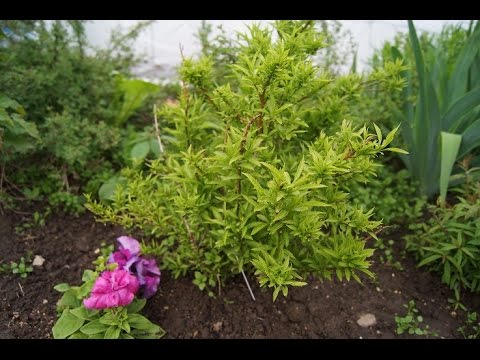

Watch this video on YouTube


